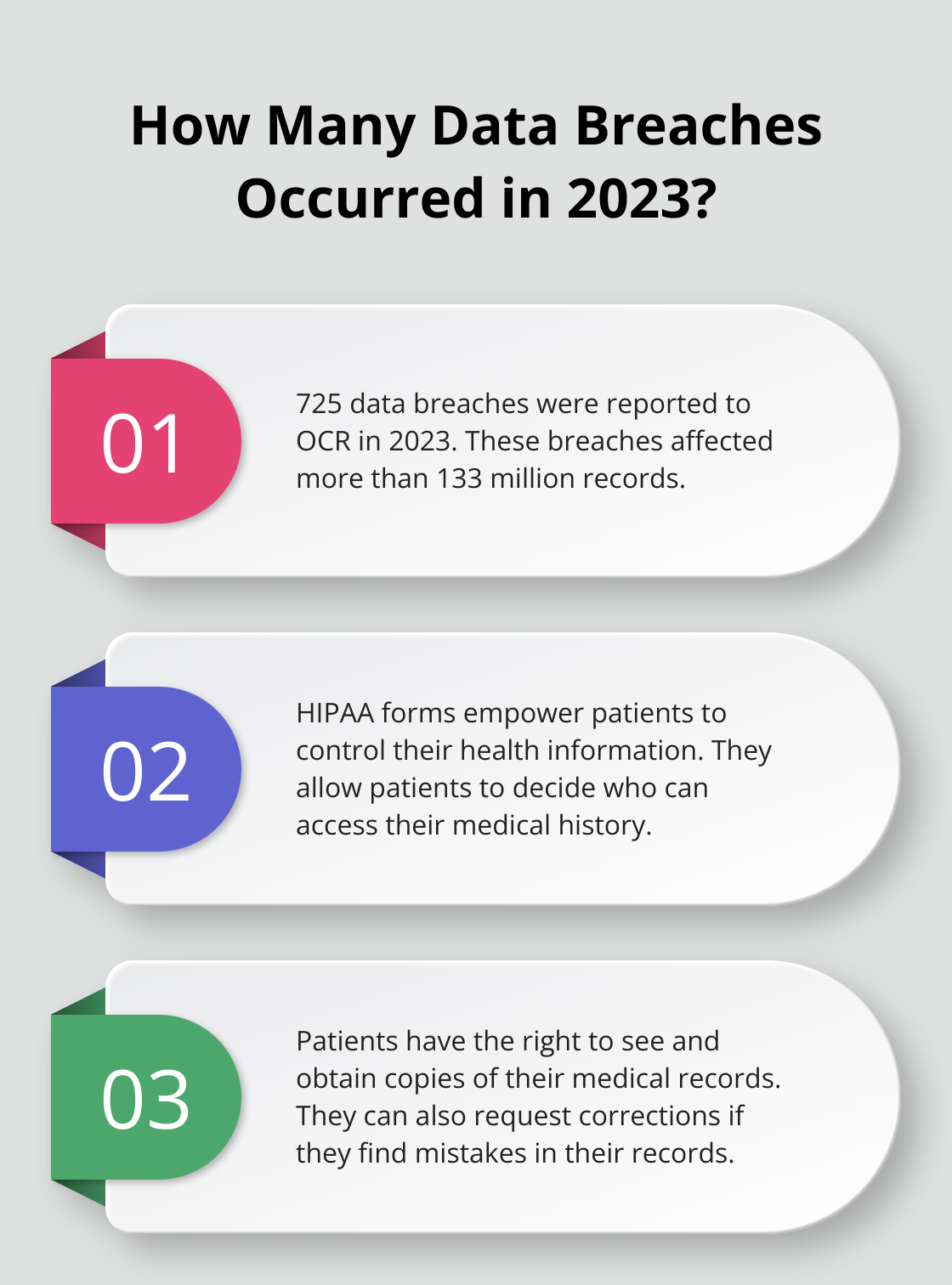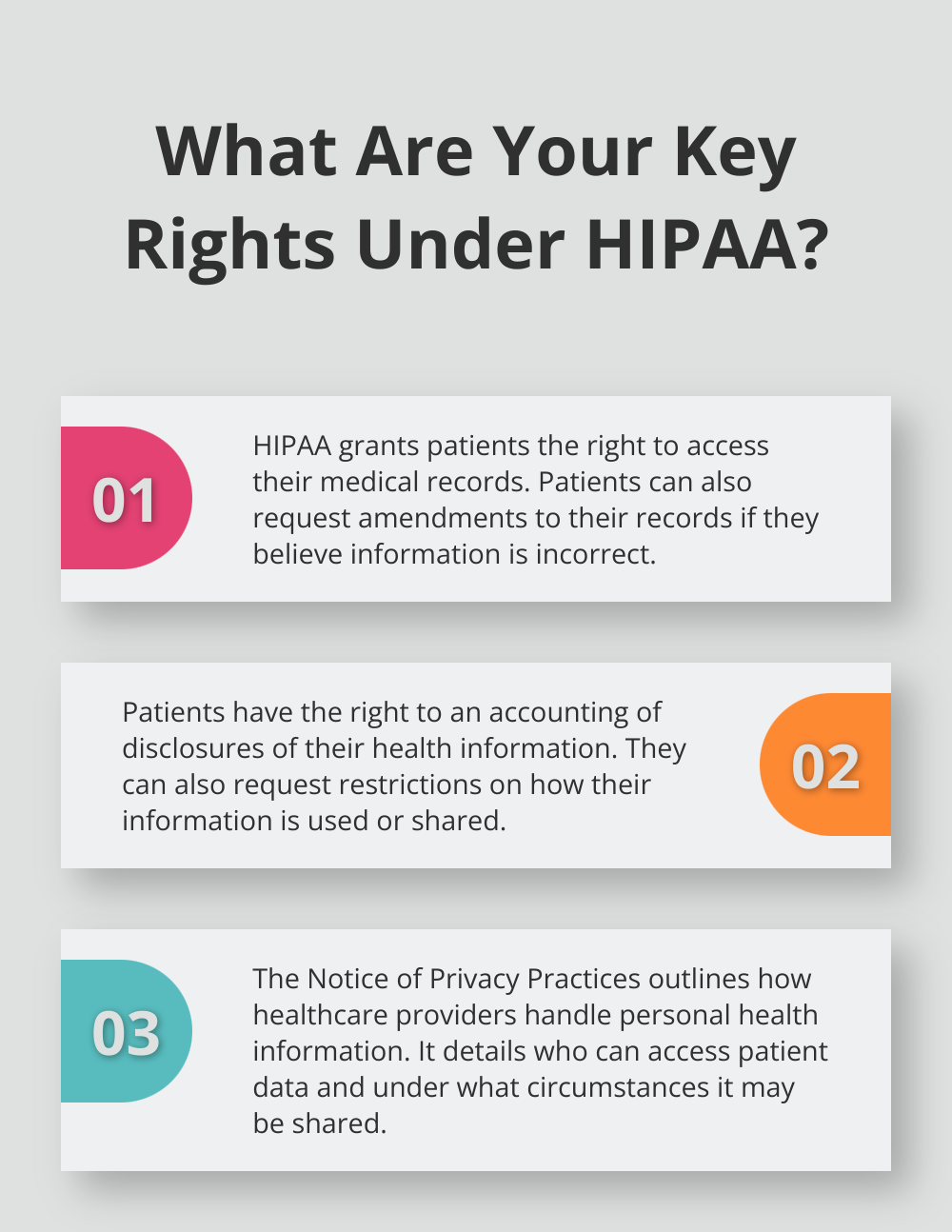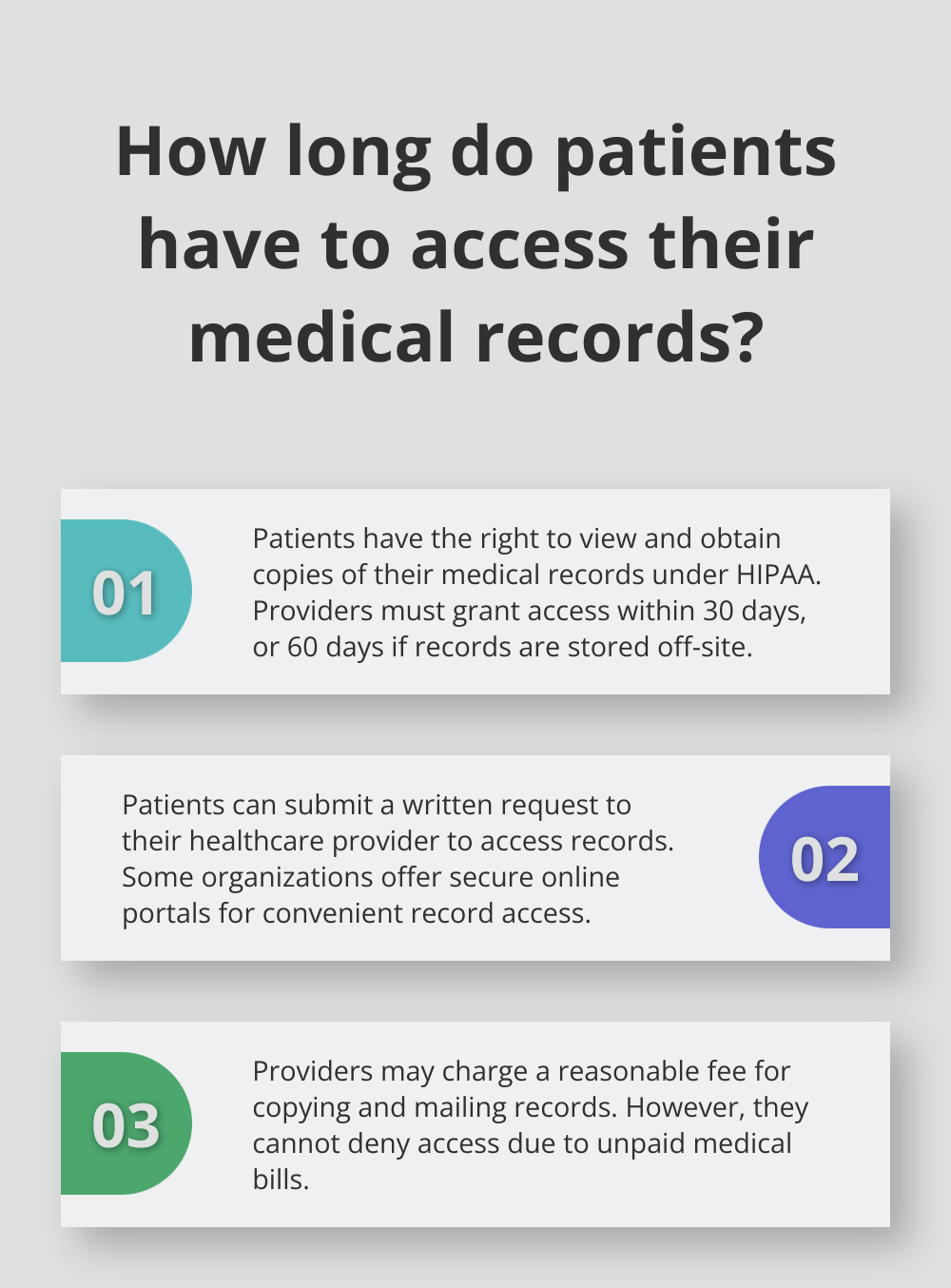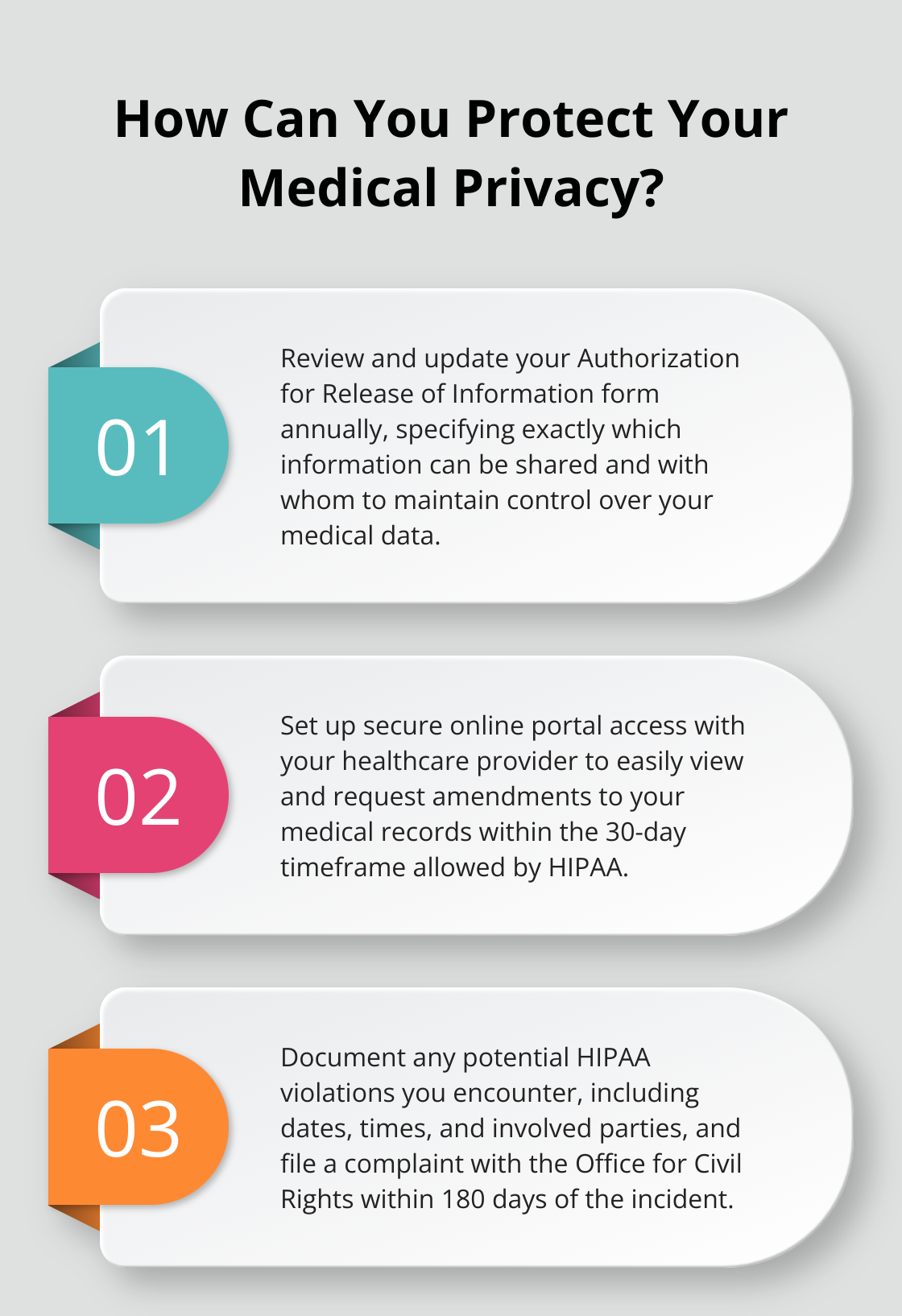HIPAA compliance forms for patients are essential documents in healthcare. They protect your privacy and give you control over your medical information.
At ScriberJoy, we believe understanding these forms is crucial for every patient. This guide will explain what HIPAA forms are, why they matter, and how they safeguard your rights in the healthcare system.
What Are HIPAA Compliance Forms?
The Essence of HIPAA
HIPAA (Health Insurance Portability and Accountability Act) is a federal law that protects your medical information. It establishes rules for healthcare providers on how to handle your data. HIPAA compliance forms transform these rules into actionable paperwork.
Types of HIPAA Forms
Patients encounter several types of HIPAA forms:
- Notice of Privacy Practices (NPP): This document explains how your healthcare provider uses and protects your information.
- Authorization for Release of Information: These forms allow you to control who can access your medical records.
- Consent for Treatment: This form outlines your agreement to receive medical care.
- Patient Rights and Responsibilities: This document details your rights under HIPAA and your responsibilities as a patient.
The Importance of HIPAA Forms
HIPAA forms empower you to control your health information. They allow you to decide who can access your medical history, which is particularly important in our digital age. According to recent data, 725 data breaches were reported to OCR in 2023, affecting more than 133 million records.
Your Rights Under HIPAA
These forms outline your rights as a patient. For example:
- You have the right to see and obtain copies of your medical records.
- You can request corrections if you find mistakes in your records.
- You can file complaints if you believe your rights have been violated.
The Role of Technology
Modern healthcare providers (like ScriberJoy) use advanced technology to ensure HIPAA compliance. These tools help protect your information while making it easier for you to access and control your data.

As we move forward, it’s important to understand how these forms protect your rights and what key information they contain. Let’s explore the specific details you’ll find in HIPAA compliance forms.
What’s Inside HIPAA Compliance Forms?
HIPAA compliance forms contain critical information that safeguards your privacy and rights as a patient. Understanding these forms empowers you to make informed decisions about your healthcare. Let’s explore the key components you’ll encounter in these essential documents.
Notice of Privacy Practices
The Notice of Privacy Practices (NPP) is a cornerstone of HIPAA compliance. This document outlines how your healthcare provider handles your personal health information. It details who can access your data, how it’s used, and under what circumstances it may be shared.

Pay close attention to sections describing your rights and how to file a complaint if you believe your privacy has been violated.
Authorization for Information Release
This form gives you control over who can access your medical records. It’s not a blanket permission slip – you can specify exactly what information can be shared and with whom. For example, you might allow your specialist to access your primary care records, but not vice versa.
Under the Privacy Rule, a patient’s authorization is for the use and disclosure of protected health information for research purposes.
Be specific when you fill out this form. Include the name of the person or organization receiving the information, the purpose of the disclosure, and an expiration date for the authorization. You have the right to revoke this authorization at any time.
Consent for Treatment
While not strictly a HIPAA form, the consent for treatment document often includes HIPAA-related information. This form outlines the medical procedures you agree to and acknowledges that you understand the potential risks and benefits.
Read this form carefully. It should explain your right to refuse treatment and the potential consequences of doing so. If anything is unclear, ask your healthcare provider for clarification.
Patient Rights and Responsibilities
This document provides a comprehensive overview of your rights under HIPAA and your responsibilities as a patient. Key rights include:
- The right to access your medical records
- The right to request amendments to your records
- The right to an accounting of disclosures of your health information
- The right to request restrictions on how your information is used
Your responsibilities might include providing accurate information about your health history and current medications. This document serves as a roadmap for navigating your healthcare journey while maintaining your privacy.
Understanding these forms is essential for protecting your privacy and exercising your rights as a patient. Always take the time to read them thoroughly and ask questions if anything is unclear. Your health information is valuable – these forms help you keep it secure and under your control.
Now that we’ve explored the contents of HIPAA compliance forms, let’s examine how these documents protect your rights as a patient and empower you to take control of your healthcare information.
How Patients Can Exercise Their HIPAA Rights
Access Your Medical Records
HIPAA grants you the right to view and obtain copies of your medical records. Submit a written request to your healthcare provider to initiate this process. Providers must grant access within 30 days (or 60 days if records are stored off-site). Some healthcare organizations offer secure online portals for convenient record access.

Providers may charge a reasonable fee for copying and mailing records. However, they cannot deny access due to unpaid medical bills. If you identify errors in your records, you have the right to request corrections.
Request Amendments to Your Records
When you spot inaccuracies in your medical records, you can request amendments. Submit a written request to your healthcare provider, clearly stating the information you believe is incorrect. Include evidence to support your claim.
Your provider has 60 days to respond. They may deny your request if they believe the information is accurate and complete. In such cases, you have the right to submit a statement of disagreement, which must be included with your records.
Obtain Disclosure Accounting
You have the right to know who has accessed your health information. Request an accounting of disclosures from your healthcare provider. This report will show instances where your information was shared outside of treatment, payment, or healthcare operations.
Providers must maintain disclosure records for six years. You can request one free accounting per year. Additional requests within a 12-month period may incur a reasonable fee.
Not all disclosures are included in this accounting. Disclosures for treatment, payment, or healthcare operations are typically excluded.
File a Complaint
If you believe your HIPAA rights have been violated, you have the right to file a complaint with the Office for Civil Rights. Document the incident thoroughly, including dates, times, and individuals involved. Submit your complaint within 180 days of the alleged violation.
The Office for Civil Rights will investigate your complaint and take appropriate action if a violation is found. You cannot be retaliated against for filing a complaint.
Communicate with Your Healthcare Providers
Open communication with your healthcare providers is essential for protecting your health information. Don’t hesitate to ask questions about how your information is used and shared. Request clarification on any HIPAA-related forms or policies you don’t understand.
Some providers (like ScriberJoy) offer additional resources to help patients understand their HIPAA rights. Take advantage of these materials to stay informed about your privacy protections.
Final Thoughts
HIPAA compliance forms for patients are essential tools that protect your healthcare privacy. These forms empower you to control your medical information and ensure your rights are respected. You should familiarize yourself with the different types of HIPAA forms, including the Notice of Privacy Practices and Authorization for Release of Information.

We encourage you to actively engage with your healthcare providers about your privacy rights. Don’t hesitate to ask questions or voice concerns about how your information is handled. You have the right to access your medical records, request amendments, and file complaints if you believe your rights have been violated.
At ScriberJoy, we maintain high standards of patient privacy and HIPAA compliance. Our medical transcription software ensures accurate documentation while adhering to strict HIPAA guidelines. Your awareness and participation in HIPAA compliance strengthen the entire healthcare system’s commitment to protecting patient information (including yours).

Leave a Reply
You must be logged in to post a comment.